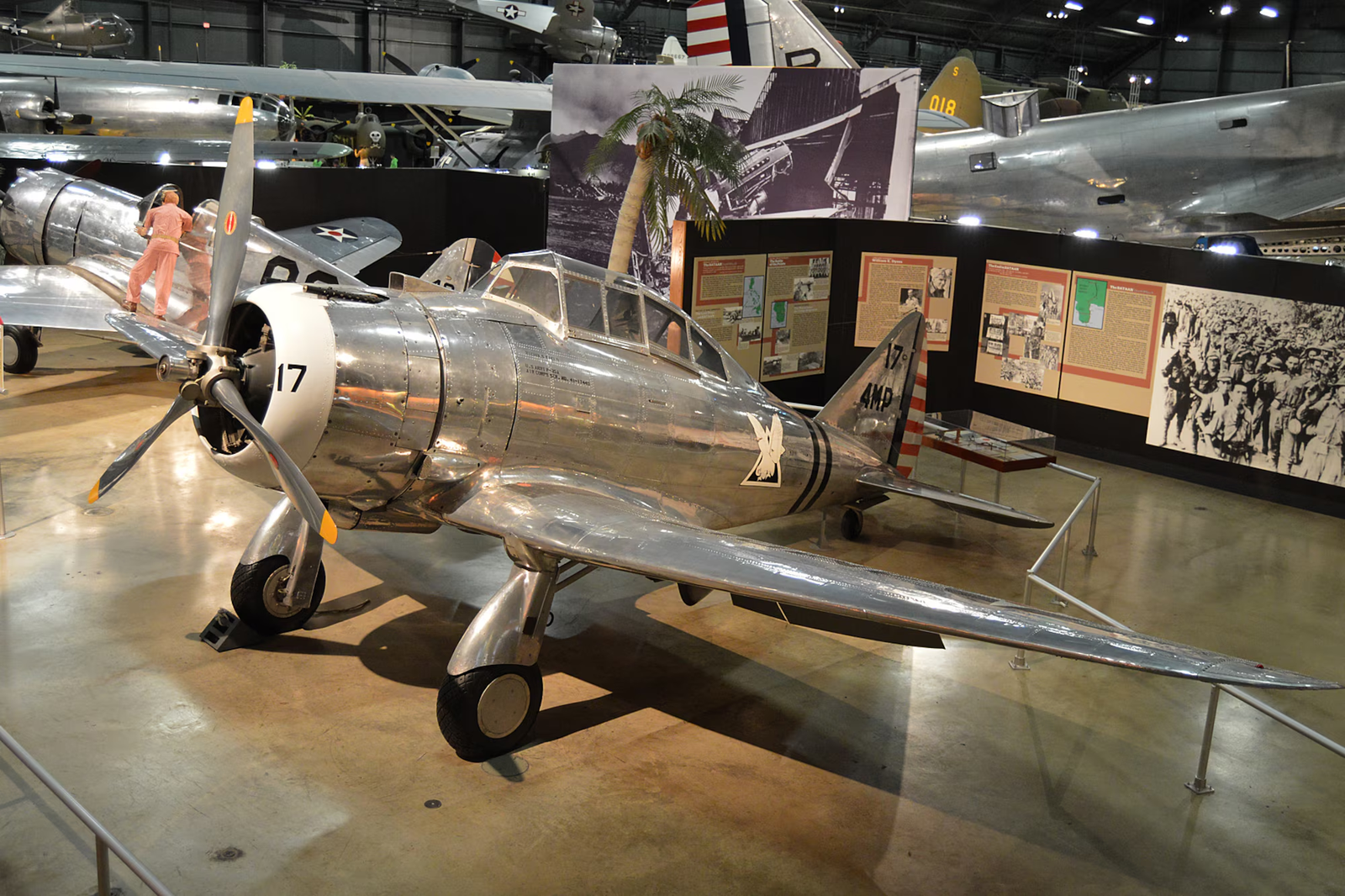
In the unforgiving environment of air combat, a fighter’s reputation can be made or broken in a matter of seconds. Some designs become legendary with the passage of time—the Spitfire, the F-16, the Phantom. Others simply never meet expectations. Delayed timing, bad engineering, or hasty production can seal the fate of even the best design. History is filled with fighters who did not meet expectations. Here are ten of the most disappointing, in order from somewhat underwhelming to completely catastrophic.

10. Seversky P-35
When the Seversky P-35 took to the skies in the 1930s, it seemed a taste of things to come. It was America’s first all-metal monoplane fighter, with retractable landing gear and an enclosed cockpit. Sadly, the rate of aeronautical progress soon outran it. When the war started, the P-35 was outdated. Only 76 saw U.S. service, and some sent overseas were still in crates when hostilities commenced. Without armor, self-sealing tanks, and enough firepower, the type was quickly destroyed once fighting started.

9. Messerschmitt Me-210
The Me-210 was intended to supplant the Luftwaffe’s twin-engine Bf 110. On paper, it had such advanced features as remotely controlled gun turrets and a streamlined fuselage. In reality, it was unsafe to fly—likely to nasty stalls and inferior handling. Though flawed, the German Air Ministry stupidly commissioned 1,000 before the aircraft had been fully tested. Production was stopped at only around 400 before they were reworked and sold with a new name as the Me-410 to avoid humiliation.

8. Focke-Wulf Ta-154 Moskito
Designed as Germany’s response to Britain’s wooden Mosquito, the Ta-154 initially promised much. The prototype possessed excellent speed and agility, but these attributes disappeared when the complete complement of night-fighter equipment was fitted. Then tragedy struck when Allied bombing destroyed the factory where it was making its proprietary adhesive. The backup glue was corrosive and damaged the airframe, leading to catastrophic failures. Only about 50 were produced before the program folded, and desperate schemes to convert them to remotely controlled suicide drones went nowhere.

7. Blackburn B-25 Roc
The Roc was the Royal Navy’s disastrous experiment with a turret-armed carrier fighter. It was constructed on a dive-bomber airframe and was slow, clumsy, and underpowered. Its top speed was only 223 mph, and it could not compete with contemporary adversaries. It never entered service on the true front line and instead remained mostly as a target tug or defense gun platform. There was even a worse floatplane version tested and quickly abandoned. The Roc is one of the most impractical British naval aircraft of the war.

6. Heinkel He-162 Salamander
As things became desperate for Germany in 1944, the He-162 was pushed into production as a low-cost “people’s fighter” for barely trained pilots, including some teenagers. It was constructed mostly of plywood and was fragile and unstable. While quick, it had structural failure and mediocre reliability. Several crashed during flight tests and training, and more were lost due to accidents than to enemy action. In the few engagements it had with Allied aircraft, it did very little.

5. Curtiss-Wright CW-21 Demon
Sold as the world’s fastest-climbing interceptor, the CW-21 was sleek but constructed more like a trainer than a fighter aircraft. The U.S. turned it down, but some found their way into the hands of foreign purchasers. When they were finally engaged in combat, it was evident that the weaknesses were rampant. Without armor and lightly armed, it was futile against more advanced warriors of the time. The handful that were sent were soon annihilated, and the design became history.

4. Caudron C.714
The C.714 was basically a raceplane forced into fighter duty. Cheap to produce, it was delicate, underpowered, and ill-armed. In combat, it was at a disadvantage almost immediately. So poor was its performance that it was withdrawn from service after just a week. Even nations desperate for fighters turned it down, and only a few Polish volunteer pilots in France flew it in anger. Its career was mercifully brief.

3. Lavochkin-Gorbunov-Gudkov LaGG-3
Made of plywood covered in resin to conserve limited metals, the LaGG-3 was cumbersome, slow, and hard to handle. It had no speed, rate of climb, or maneuverability to be competitive with its opponents. Soviet aviators nicknamed it “varnished guaranteed coffin.” While subsequent modifications made it the much-improved La-5, the initial LaGG-3 had already gained a reputation as one of the worst Soviet fighters of the war.

2. Brewster F2A Buffalo
The Buffalo was the first monoplane carrier fighter of the U.S. Navy, but it was a failure almost from the beginning. It was underpowered, heavy, and shoddily built. Against the highly maneuverable Japanese Zero, it had no chance. Marine pilots who used it at Midway nastily referred to it as the “Flying Coffin.” It found some success only in Finnish use, and that was due more to the pilots’ skill than the aircraft. Brewster’s try at producing better planes later failed, and the company dissolved after the war.

1. McDonnell XF-85 Goblin
Easily one of the oddest fighters ever constructed, the minuscule XF-85 Goblin was intended to be carried within a massive bomber and dropped off as a defensive escort. In practice, it was underpowered, flightless, and very hard to fly. The pilots found it difficult to dock it back with its mothership, and the idea of a “parasite fighter” soon proved impractical. Fewer than two were ever constructed before the project was dropped. Now the Goblin is remembered more as an oddity than a warplane.

From poor design to bad timing and hasty manufacture, these fighters demonstrate how fast an aircraft can plummet from promising prototype to cautionary example. For each iconic warbird that gave its era definition, there’s another that reminds us that not every notion in the history of flight was predestined to work.
